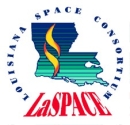



Payload 07 Information
Payload Flight Number:
Institution:
Payload Title:
OZONE V
Student Leader:
Faculty Advisor:
Payload class:
Small
Payload ID Number:
07
Mass:
2.6 kg
Current:
360 mA
Serial Downlink:
Yes
Analog Downlink:
No
Serial Commands:
Yes
Discrete Commands:
No
Payload Specification & Integration Plan
Due: 06/26/2015
Delivered:
Payload Integration Certification
Scheduled: 08/07/2015
Actual:
Flight Operation Plan
Due: 08/03/2015
Delivered:
Final Flight / Science Report
Due: 12/11/2015
Delivered:
Abstract:
UND and UNF team have successfully flown payloads on the HASP balloon flights since 2008 and measured the ozone gas profile in the stratosphere. The ozone profiles measured by sensors payloads were nearly matched with the expected profile. Based on the success, experience and the few known technical issues of the previous payloads, the UND-UNF team proposes the HASP 2015 flight for the development of improved version of payload to measure ozone profile using high sensitive and selective ozone gas sensor arrays and also to measure pollutant gases in the atmosphere and troposphere. The output of the proposed payload will help us for the development of free flying small gas sensors payload instrument for meteorological weather balloon, rocket or sub orbital space vehicle and may be used at Antarctica for the long duration of balloon flight. Eight nanocrystalline ITO thin film gas sensors array and eight nanocrystalline alpha phase of silver tungstate thin film gas sensors array will measure oxidizing ozone gas, while eight nanocomposite WO3+ITO thin film gas sensors will detect the reducing pollutant gases such as CO, CO2, in the atmosphere and troposphere. These thin film sensors have higher sensitivity, good selectivity and stability and also faster response time. Temperature controller will be used to control operating temperature of all gas sensors at about 302 K. Three sensors boxes will be mounted on the three sides of rectangular payload body. GaP photodiode will be mounted just below ozone gas sensors box in order to measure amount of photovoltage generated by UV light, which will support the science concept of generation of ozone gas in the presence of UV light. This concept will help us understanding the effect of darkness or shadow on the gas sensors and decrease of ozone gas concentration at the night time. In addition, new pressure sensor will measure the low pressure about 1 mbar and new GPS will measure the altitude throughout the flight without any blockage of transmission will be mounted on the payload. Ozone and reducing gas sensors will be fabricated and calibrated by the students’ team at UNF and also tested at UND. The developed payload can also use to fly on the long duration of balloon flight at Antarctica, which is our dream and long term goal.
Payload Integration Plan:
Science Report:
|